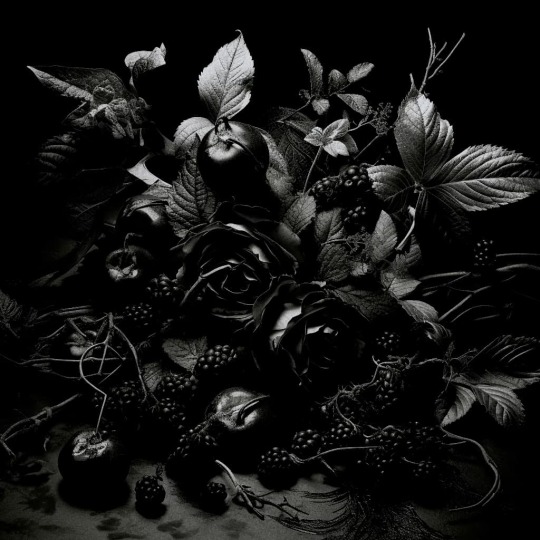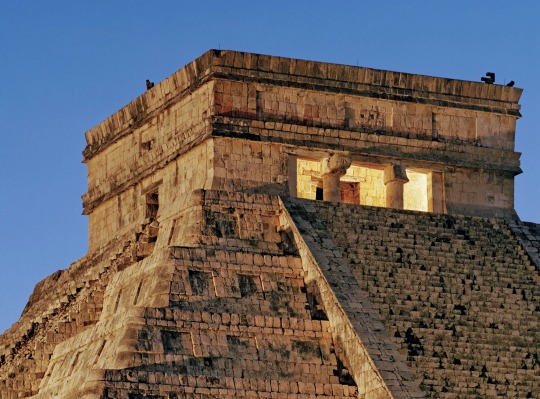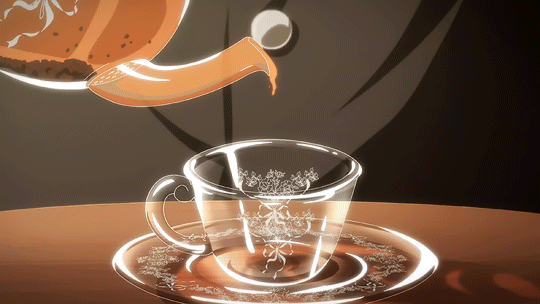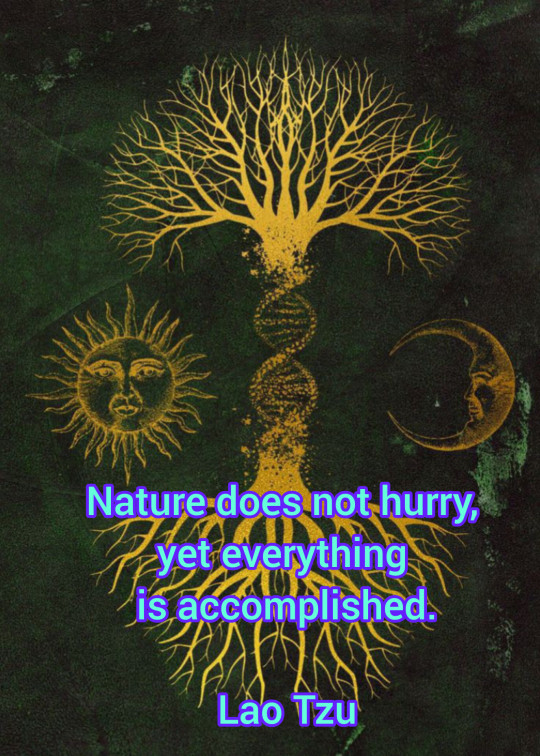#Spiritual Medicine
Explore tagged Tumblr posts
Text

ℐ𝓃𝓉𝓇𝑜𝒹𝓊𝒸𝓉𝒾𝑜𝓃 𝒯𝑜 𝒮𝒽𝒶𝒹𝑜𝓌 𝒲𝒾𝓉𝒸𝒽𝒸𝓇𝒶𝒻𝓉 ℬ𝑜𝓉𝒶𝓃𝒾𝒸𝓈 A Gᴜɪᴅᴇ Tᴏ Usᴇғᴜʟʟ Hᴇʀʙs ﹠ Fʟᴏᴡᴇʀs. Shadow witchcraft, like many other forms of witchcraft and magical traditions, incorporates a deep reverence for the natural world and the power of herbs in its practices. Within the shadow witchcraft tradition, certain herbs are considered sacred and hold a special place in rituals, spellwork, and healing. These herbs are chosen for their unique properties, both physical and metaphysical, and are often used to enhance the practitioner's connection to the shadows, the spirit world, and the unseen forces that permeate our reality.
Mugwort (Artemisia vulgaris): One of the most iconic herbs in shadow witchcraft, mugwort is revered for its ability to enhance psychic abilities and facilitate astral projection. It is believed to provide clarity in dreams and aid in connecting with the spirit world.
Belladonna (Atropa belladonna): Belladonna is a potent and highly toxic herb often associated with the darker aspects of shadow witchcraft. It is used cautiously, as it can induce altered states of consciousness and enhance divination, but it must be used with extreme care due to its deadly nature.
Mandrake (Mandragora officinarum): Mandrake is a legendary herb that holds a prominent place in shadow witchcraft due to its associations with powerful magic and the ability to summon spirits. It is considered a protector of the practitioner.
Wormwood (Artemisia absinthium): Wormwood is an herb that has been traditionally used in shadow witchcraft for its protective properties, as well as its association with absinthe, a spirit that has inspired many artists and writers.
Datura (Datura stramonium): Datura, also known as "thorn apple," is another highly potent and toxic herb. It is associated with shamanic journeying, but extreme caution is necessary when working with it due to its dangerous properties.
Henbane (Hyoscyamus niger): Henbane is used in shadow witchcraft for its ability to induce trance states and facilitate communication with spirits. Like belladonna and datura, it is a toxic plant and must be used with care.
Wolfsbane (Aconitum napellus): Wolfsbane, also known as aconite, is associated with protection and transformation in shadow witchcraft. It is believed to ward off malevolent entities and is used in rituals that involve shape-shifting.
Nightshade (Solanaceae spp.): Nightshades encompass various plants, including belladonna, datura, and mandrake, all of which have their unique uses in shadow witchcraft. They are linked to altered states of consciousness and spirit communication.
Hemlock (Conium maculatum): Hemlock, another toxic plant, is associated with necromancy and the summoning of spirits. It is used with extreme caution in rituals and spellwork.
Yew (Taxus baccata): Yew is considered sacred in shadow witchcraft due to its association with death and rebirth. It is often used to honor ancestors and connect with the spirit world.
Blackthorn (Prunus spinosa): Blackthorn is a protective and banishing herb, often used in warding off negative energies and spirits. Its thorny branches are seen as a natural barrier against harm.
Alder (Alnus spp.): Alder is linked to the element of water and the power of psychic intuition. It is used in divination and to enhance the flow of energy during rituals.
Rowan (Sorbus aucuparia): Rowan, also known as mountain ash, is considered a powerful protective herb in shadow witchcraft. It is used to ward off malevolent spirits and energies.
Nettle (Urtica dioica): Nettle is used for purification and removing curses. Its sting is seen as a symbol of protection, and it is used in banishing rituals.
Willow (Salix spp.): Willow is associated with the moon and feminine energy, making it a significant herb in shadow witchcraft. It is used for divination and connecting with the cycles of the moon.
Oak (Quercus spp.): The mighty oak is a symbol of strength and protection. In shadow witchcraft, it is used to connect with ancient wisdom and to invoke the energies of the earth.
Hawthorn (Crataegus spp.): Hawthorn is considered a portal to the fairy realm and is used for protection against malevolent spirits. It is also associated with love and passion spells.
Poppy (Papaver spp.): Poppy is used to induce altered states of consciousness and to facilitate dreamwork and divination. Its connection to Morpheus, the god of dreams, is significant in this context.
Broom (Cytisus scoparius): Broom, also known as Scotch broom, is associated with purification and is used to sweep away negative energies and influences.
Juniper (Juniperus communis): Juniper is used for purification and protection. Its fragrant berries are believed to ward off evil spirits and negative influences.
Cypress (Cupressus spp.): Cypress is associated with the afterlife and is used in rituals to communicate with the spirits of the deceased. It is also used for banishing and cleansing.
Hellebore (Helleborus spp.): Hellebore, sometimes called "Christmas rose," is believed to banish evil spirits and protect against their influence. It is also used for divination and dreamwork.
Horehound (Marrubium vulgare): Horehound is used for protection and exorcism. It is believed to repel negative energies and harmful spirits.
Vervain (Verbena officinalis): Vervain is considered a sacred herb that enhances magical abilities and protection. It is often used to purify and consecrate ritual tools.
Mullein (Verbascum thapsus): Mullein is associated with the element of fire and is used in shadow witchcraft for protection, especially against dark forces. Its tall, candle-like stalks are seen as beacons of light in the spiritual realm.
Baneberry (Actaea spp.): Baneberry is associated with the banishment of evil and negative influences. It is often used in protection spells and rituals.
Devil's Claw (Proboscidea spp.): Devil's claw is believed to possess the power to dispel malevolent spirits and curses. It is often used in rituals designed to break hexes.
Monkshood (Aconitum spp.): Monkshood, like wolfsbane, is associated with transformation and protection. It is used to enhance shapeshifting and to ward off harmful entities.
Oakmoss (Evernia prunastri): Oakmoss is associated with grounding and connecting to the energies of the earth. It is used to enhance the stability of shadow witchcraft rituals.
Witch Hazel (Hamamelis virginiana): Witch hazel is used for protection, divination, and healing. Its branches are seen as divining rods to connect with the spirit world.
Skullcap (Scutellaria spp.): Skullcap is associated with psychic protection and enhancing clairvoyance. It is used in rituals to open the third eye and connect with the unseen.
Yarrow (Achillea millefolium): Yarrow is used for divination and love spells in shadow witchcraft. It is believed to enhance the practitioner's intuitive abilities.
Vetiver (Chrysopogon zizanioides): Vetiver is used for grounding and connecting with the earth's energies. It is often used in spells to anchor and stabilize the practitioner's intent.
Dandelion (Taraxacum officinale): Dandelion is associated with transformation and communication with spirits. Its seeds are often used in divination rituals.
Black Cohosh (Actaea racemosa): Black cohosh is used in shadow witchcraft for protection, banishing, and dispelling negative energy. It is believed to have a purifying effect.
Cedar (Cedrus spp.): Cedar is used for purification, protection, and enhancing spiritual connections. It is often used in smudging and cleansing rituals.
In shadow witchcraft, these sacred herbs and botanicals play a crucial role in connecting with the hidden realms, communicating with spirits, and working with the shadows. Practitioners approach their use with a deep respect for the natural world and the mysteries of the unseen, drawing upon the wisdom of these plants to navigate the intricate tapestry of shadow magic. It is important to remember that many of these herbs are toxic and should be used with caution, if at all. Always prioritize safety and ethical considerations when incorporating these plants into your practice. © Dʏsʜᴀɴᴋᴀ/Oᴅᴇᴛᴛᴇ ₂₀₂₃
#Herbs#Shadow Witchcraft Herbs Introduction#Shadow Herbs#herbology#Witchy Botanics#Witchcraft#witchcraft australia#Witchcraft Author#Witches of Australia#Shadow Witch#Articles#Article#Wordy Sunday#Sunday Writing#Gothic Witch#The Wisdom of Plants#Spiritual Medicine#Contemporary Witchcraft#Hereditary Witchcraft#Follow
19 notes
·
View notes
Text
Healing Benefits of Prostration (Proven)
🍂 Healing Benefits of Prostration (Proven)🔹 Soothing Sciatic Pain with Prostration👌 Prostration strengthens the spine and helps relieve sciatic pain.🔹 Relief from Constipation, Indigestion, and Elimination of Waste👌 Prostration not only relieves constipation and indigestion but also strengthens the diaphragm and helps eliminate waste from the body by compressing the abdominal area.🔹 Freshness and…

View On WordPress
0 notes
Text
7 Road / EB – Signs of MAJOR Life Change: Day 7 of 13
THE TRECENA OF TRANSFORMER/CIMI: BEFORE AND AFTER MAYAN CALENDAR DAYKEEPER’S JOURNAL 7 Road/EB, Cherokee, Rattlesnake Tooth/KANU’GA, Destiny Kin 72, …7 Road / EB – Signs of MAJOR Life Change: Day 7 of 13

View On WordPress
1 note
·
View note
Text
A LOT CAN HAPPEN IN A MONTH. TRUST GOD.
#self growth#self healing#self love#spiritual vibrations#spiritualawakening#spiritualjourney#house plant#plants#black women#black girl moodboard#holisticdevelopment#holisticwellbeing#holisticwellness#holistichealth#holism#holistic medicine
11K notes
·
View notes
Text
HERBS for Digestive Health🌿
To help improve and ease digestive disorders and issues.
Ginger
widely used to treat nausea, bloating and soothe digestive issues
Turmeric
used for digestive weakness and inflammation
Chamomile
helps settle inflammation and anxiety related stomach issues
Fennel
great to reduce bloating, cramping and relax stomach muscles
helps break down food
Cinnamon
helps regulate circulation, blood sugar levels, and digestive function
Rosemary
supports healthy digestive functioning
Increasing your consumption of some of these even slightly could make a big difference over time! Should be used with caution.


#digestion#digestivehealth#gut health#herbs#medicinal herbs#herbal treatments#herbal tea#herbal#natural healing#health#healthy#healing#spirituality#witch community#witchblr#spiritual#herbs and spices#plants and herbs#tips#kitchen tips#natural medicine#stomach issues#stomach problems#digestive disorders#chamomile#ginger#fennel#rosemary#inflammation#digestive system
439 notes
·
View notes
Text
The Library MEGA POST!
Hwello. This is a mega post of every information we have so far and where links to new information will be added. This is so chu can get to the information quickly and it will be more organized in this space.

Herbs
Wormwood
Mandrake
Lavender
Clary Sage
Belladonna
Yarrow
Pennyroyal
Patchouli
Culinary Herbs
Garlic
Basil
Dill
Rosemary
Thyme
Bay Leaf
Cinnamon
Ginger
Veggies and Fruits
Russet Potatoes
Apples
Pumpkins
Cranberries
Crystals
Black Obsidian
Amethyst
Tiger's Eye
Lapis Lazuli
Peridot
Bloodstone
Carnelian
White Moonstone
Chrysoprase
Miscellaneous
How to Use Rosemary
How to Use Basil
How to Use Lavender
How to Use Mandrake
Water and Plants
How to Celebrate Samhain!
Sources
Plant Witchery by Juliet Diaz
Complete Language of Herbs by S. Theresa Dietz
Encyclopedia of Magical Herbs Scott Cunningham
The Herbal Alchemist Handbook by Karen Harrison
The Modern Witchcraft Guide to Magickal Herbs by Judy Ann Nock
The Green Witch by Arin Murphy-Hiscock
Herb Magic by Patti Wigington
Encyclopedia of Herbal Medicine by Andrew Chevallier
The Encyclopedia of 5000 Spells by Judika Illes
Dictionary of Plant Lore by Donald Watts
The Magick of Food by Gwion Raven
The Complete Language of Food by S. Theresa Dietz
Nature Guide, Rocks and Minerals - DK Publishing
Guide to Crystal Grids- Transform Your Life Using the Power of Crystal Layouts - Judy Hall
Crystals- A complete guide to crystals and color healing - Jennie Harding
The Crystal Witch - Leanna Greenaway
The Crystal Bible - Judy Hall
The Zenned Out Guide to Understanding Crystals - Cassie Uhl
The Crystal Workshop - Azalea Lee
Crystals for Witches - Rituals Spells and More - Eliza Mabelle
More will be added as information is added to the little library. Remember you can support this library by tipping and maybe a pateron in the future.
Thank chu. Bye byes~
#green witch#witchblr#witch community#witchcraft#plants and herbs#herbalist#medicinal herbs#occulltism#paganblr#nature#culinary#recipe#culinary herbs#spirituality#magick#spells#kitchen witch#crystals#crystal witch#witches of tumblr#witchy things#witch resources#baby witch#witchcraft 101#herbs#crystal grid#witch blog#kitchen witchcraft#herbalism#herbal witch
669 notes
·
View notes
Text
SPIRITUAL POLLUTION, THE GESTURES AGAINST EVIL, AND ABLUTION: A POST
The concepts of spiritual purity and pollution are central to the Faith of the Seven Faced God (and similar takes on the concept predate it throughout and beyond the immediate Wardi cultural sphere). There is no clean cut distinction between physical and spiritual health in this belief system (these concepts exist as a heavily overlapping venn diagram) and many methods intended to cleanse spiritual pollution address both realms.
The word for the concept referred to as spiritual pollution is 'mesechitse', which can translate to 'blockage' or 'severance' depending on the context (its underlying meaning is a pathway that has been stopped in some capacity).
At its core, spiritual pollution is a corruption of the living spirit (which is carried by/IS the blood). It causes both physical and spiritual problems. Polluted blood flows improperly and does not maintain the body’s natural stasis or integrity, causing or allowing disease or other bodily dysfunctions to occur. Many ailments are seen as wholly physical and internal in nature, occurring directly due to polluted blood flowing improperly and affecting key organs. Other diseases (particularly contagious or infectious disease) are known to be caused by dagi, which are harmful spirits that enter the body through orifices or wounds. A limited number of ailments (most notably pronounced schizophrenia-spectrum disorders or cognitive disabilities, unfortunately) are thought to be caused by possession by more powerful evil spirits.
At its worst, severe spiritual pollution is thought to impact or sever one's connection to God. Summarized very basically, severe pollution = blockage of flow between one's own living spirit and the greater spirit of God, which deprives a person of God's blessings and protection, severs them from the natural cycling of life and death (and prevents their necessary participation) and can put their afterlife in jeopardy.
Some degree of corruption to the living spirit is seen as completely inevitable and managed by the body, which physically expels some polluting agents via urine and feces, as well as menstruation (thus all of these substances are themselves dirty and polluting agents). It is reckoned as impossible for any living body to exist in a Completely spiritually pure state. The goal of cleansing (and broader practices revolving around spiritual integrity) is rather to maintain stasis of the body's natural cycling (and by extension a connection to God's living spirit) and to keep pollution contained and minimized.
If one's immortal soul successfully reaches the afterlife, it is then reborn into a spiritually pure existence incapable of being 'severed' from God in any capacity. God Itself is a spiritually pure being, but Its body and living spirit (the world and its cycles, manifested as Faces) is vulnerable. The purity of God's living spirit (and therefore the life-sustaining functions of the world that all beings depend upon) must be sustained, protected, and restored through right practice, which is what much what the public religion revolves around.
Spiritual pollution is a separate but overlapping concept with:
-Metaphysical vulnerability, the word for which is 'namne couyibase' (literally ‘lacking integrity of Being’). This is a state in which the body and living spirit is considered vulnerable to great change, for good or for bad. These states can have vital and positive uses (they are utilized in many rituals, and it is what allows for conception and birth), but must be entered with caution and intentionality. Uncontrolled namne couyibase can otherwise leave one open to forms of spiritual harm. -Curses, which are targeted infliction of harm (of all sorts- bad luck, evil spirits, etc) onto a person, place, or thing. A spiritually polluted body is has less resistance to curses, and curses can intensify this pollution. -Possession, which is when evil spirits attach themselves to or inhabit the body. In the vast majority of cases, possession does not mean an evil spirit is Controlling the body, merely harming it. A spiritually polluted body has less resistance to possession, and possession can intensify this pollution. -Ritual uncleanliness, which is a state of intensified spiritual pollution that requires complete prohibition from a person from entering sacred spaces or participating in certain rituals until they are made clean. The most common reasons for ritual uncleanliness are active menstruation, being in the mourning period, or having performed a known dirtying action without its required ablution (see below).
---
Multiple levels of religious-medical practice are centered around maintaining the body's stasis and cleansing it of mesechitse whenever possible. The methods are both active and passive.
Passive methods include the wearing of protective objects/amulets or having the motifs on household items or as decoration (the most ubiquitous are charms like the pelatoche (lit: '(ocean) eye') or odatochent (lit. 'Gods eyes'), the skimmer woman, or phalluses, and the wearing of gull feathers), in addition to other beneficial/protective iconography (guardian lions are most common, though physical representations of each Face of God have beneficial functions).
Active methods cover a broad swath of rites and behaviors (which is even broader in non-doctrinal folk practices). I'll be focusing here on the two main everyday methods of protection/cleansing (rather than more specialized rites) that are supported by core doctrine and may be performed by anyone, rather than being restricted to priests.
---
Gestures against evil
These are the absolute most basic protection methods, comprised of three core gestures.

Purity of intent: the hand is held with the palm facing upward, the pointer and pinky finger extended and the thumb and inner two fingers pressed together. This is the most directly ‘cleansing’ gesture, it attempts to bind uncleanliness within the body and thus to prevent inevitable background level spiritual pollution from the body infecting a pure environment or another person. You mostly perform this gesture while entering/leaving a protected or vulnerable space (literal or figurative).

Protection of spirit: the hand is held with the first two fingers pointed together, held upwards for generalized use or pointed for directed use. This is the simplest of apotropaic gestures, aiming to protect the body and spirit from outside harm. This is commonly used before or while entering contexts seen as physically and/or spiritually dangerous, or to un-aggressively counter an evil eye curse.

Dispelling of evil: The hand is held with the first two fingers pointing together, touched to the lips, and flicked away from the body. In practice, this is most commonly used to prevent attachment by malicious or otherwise harmful spirits that may have been evoked (you might perform this after you speak of someone believed to be an earthbound ghost or refer to an evil spirit directly, or immediately after touching a potentially contagious sick person (ideally followed by ablution)). This will not help you if evil spirits have fully Attached themselves to you, but can remove ones that have been attracted to you. Doing this gesture and flicking in the direction of another person is very rude.
These gestures have separate uses, but will often be performed in conjunction (usually in the order given) as a quick means of protecting oneself and the spaces around them. It is not considered a doctrinal replacement for ablution as it does not actually cleanse the spirit, but it attempts to reduce harm (both sustained and produced by the user).
---
Ablutions:
Ablution is spiritually and physically cleansing the body with clean water. The metric for clean water is fairly expansive- ocean water, any flowing water, any clear lake, shallow water sources that are clear and free of (obvious) polluting elements such as animal corpses or unclean animal feces, any clear collected water.
The core requirement of an ablution is for the hands to be cleaned in all circumstances, and for other body parts to be cleansed in addition if the situation requires it. One must fully wet the hands/other affected areas and scrub thoroughly, and then use fresh water to rinse. If you have to clean other parts of your body, you save your hands for last (as they will be used for the cleaning).
It is appropriate to perform ablutions cooperatively, but the person assisting you should participate as well (ie- if you have someone washing your back, they should scrub and rinse their own hands after). Someone considered to be in a ritually unclean state that ablution will not immediately fix (the most common are actively menstruating or being in the midst of the mourning period) should not perform ablutions on others.
Note that there is no Hard distinction between bathing for spiritual cleanliness and bathing for physical cleanliness (there is a separate set of cultural standards for physical hygiene, but most hygiene expectations are Covered by ablution). In most circumstances, ablution is just a regular, sometimes tedious everyday activity rather than a solemn or special occasion.
The ritualized requirements denote that only the hands + any given affected body parts Must be washed, but ablutions will often be an aspect of a full-body bathing routine to meet other hygiene standards. (ie: someone performing ablution before making offerings or eating a meal is only Required to wash their hands, but will very often wash their whole bodies and clean their hair- offerings and a meal are (typically) daily activities, so this is a good time to just get a full bath in while you’re at it). It may additionally involve washing the skin with oil or soap, moisturizing the hair with oil, scraping away dead skin, and applying perfumes. This is not a ritual requirement and is performed because generally, people like to feel clean and smell nice.
The hard physicality of cleansing WITH WATER is KEY to this practice. Per core doctrine, there are no DIY cleansing methods that replace washing with water. If one does not have access to clean water for ablutions, they should not perform offerings whatsoever (but are allowed to pray) until they can be cleansed, and accept that they are receiving spiritual pollution by performing ablution-required tasks in the meantime. A blessing from a priest is the only doctrine-supported spiritually cleansing replacement for water ablutions. In practice many people will use the gestures against evil as a replacement (which is not supported by doctrine and is more common in folk religious practice), and virtually everyone will find ways to get physical contaminants off of their body either way (if you step in dog shit and don't have any water nearby, you're going to wipe it the hell off even if that doesn't make you ritually clean).
Times when such an ablution is generally considered a hard requirement:
Before bloodletting in prayer or making other offerings
Before meals
Before assisting in a birth
After menstruation ends
After receiving penetrative sex
After defecating
After urinating (this isn't as ubiquitously seen as a hard requirement, in a lot of cases people interpret it as 'only if you actually get pee on your hands')
After touching urine
After touching feces (many lines of thought make exceptions for the excrement of cattle and khait due to their clean and sacred status- this makes life a easier for the majority of people who have to use dry dung as fuel)
After touching a dead body (human or animal)
At the end of your mourning period for dead kin (traditionally as part of a larger ritual involving full body submergence in flowing water, rather than as a common ablution)
After touching someone else's blood (aside from rites that require it, in which the blood is expected to be clean and the cross-pollution of living spirit is intentional) (technically includes semen but this does not come up very often)
After touching most sick people (particularly with contagious diseases or any skin ailments)
After recovering from an illness (ablutions will be performed as an aspect of treatment as well)
Before entering most temple's inner shrines (and some temples altogether)
Also a requirement for participation in certain specific rites and/or festivals
The exact nuances on how hard these requirements are sometimes vary, particularly in instances revolving around touch. Official doctrine is that any unclean touch requires ablution, but in common practice this is sometimes reinterpreted as only a hard requirement when the touch occurs to the hands. Most practitioners do not perform an ablution immediately after an unclean touch occurs (if you're a field laborer and step in dung, you're probably going to wait to wash until you retire for the night), and not everyone performs ablutions every single time they 'should'.
Only drawing I have related to ablution under the cut (nudity)

This is one way to do it
#I think it was supposed to have dialogue besides#<- SERENE#but I don't remember what it was I drew it over a month ago#I've had the concepts of ritual washing + gestures against evil + general spiritual pollution mentioned a bunch without ever really#going over it so here it is#This society has pretty decent hygiene overall due to both the physical-spiritual health angle and also very specific hygiene#expectations. Most people are bathing in SOME form on a daily basis#Also the proto-proto-proto germ theory in seeing contagious diseases caused by evil spirits entering the body via orifices and wounds#- in conjunction with some levels of evidence-based medicinal experimentation - leads to some like actually effective forms of#prevention/protection (people effectively 'mask' around the sick to keep their mouths and noses protected from the spirits#and vinegar's ability as a disinfectant is recognized and used to prevent infections of wounds. Definitely not the most perfect#methods but not too bad)#.
66 notes
·
View notes
Text

#Sarah Mathilda Stewart#art#spiritual art#painting#posted#spirituality#medicine#divine feminine#divine love#source#creative expression#channeling#third eye
140 notes
·
View notes
Text
holistic womb healing tip:
aim to keep your womb warm by avoiding or limiting the amount of cold you put into your body and replacing it with warm foods + liquids. this increases blood flow to the uterus and aids in fertility! even if you're not trying to get pregnant, on a spiritual level, having a fertile womb allows you to naturally magnetize the things that you want in life with ease.

#daportalpractitioner#holistic health#womb healing#womb health#cycle syncing#womb#menstrual cycle#uterus#menstrual health#womens health#ayurvedic#chinese medicine#astroblr#spirituality#fertility#divine feminine#divine feminine energy#goddess
244 notes
·
View notes
Text

#taoism#tao te ching#tao#lao tzu#ayahuasca#plant medicine#psychoactive substances#consciousness#amazonia#enthogenics#vision#shaman#shamanism#spirituality
434 notes
·
View notes
Text

transcript:
Pam Grossman @Phantasmaphile.
Your friendly reminder that you can believe in magic AND medicine, spirituality AND science. Thanks!
79 notes
·
View notes
Text


Concept art of Sarah and some old concepts of Ifrit's clothing and Kelbris' vessel For the last two I based the clothes on their low poly models and adapted them to fit the cult The symbol of the moon peeking out from behind the clouds was based on the design of the forum
#forced spiritualism au#ben drowned#ben drowned arg#sarah#ifrit#matt hubris#medicine shop owner#kelbris#happy mask salesman#fs au concept#digital sketch#hylian#moon children#the happy mask salesman#hms
34 notes
·
View notes
Text
alright I'll share my thoughts on the mononoke slaying job/juuyoku since I'm bored (*´ω`*)
I think that the mononoke slaying job wouldnt be as "fancy" as some people put it to be, I think it'll just be like a regular job for yokai. I think Ive seen before multiple people say that they think the medicine sellers are raised to do it, but to me I think theyre just regular (non)people who have a job
(I think applying for a 'medicine seller' job in the yokai world would be like applying to any other job in the regular world, same with the training.)
I think it's rare for all the 64 swords to be occupied by someone at the same time, mostly because it's probably hard to find someone fit for the job, no less that each sword is 2 person(s), so they if they were all occupied they'd have to have 128 people working at the same time.
the holder of the swords (medicine seller/shingi) are always changing of course, either because of being fired, quitting, retiring, death, etc etc
(I don't think the medicine sellers or shingi are able to die from mononoke, if they were to have a sword vacant because of someone's death, they probably died from regular causes.)
the mononoke slaying job is probably very good, because mononoke will never disappear so they'll always be looking to hire new people, and also you don't have to do it so often. (And you get to travel!). I don't really know how good the pay would be though. Maybe it depends on how the mononoke? maybe some parents would push their kid to study to be a mononoke slayer, lol.
The requirements to be a medicine seller is probably to know how to fight and have some knowledge in psychology and anthropology, probably. For the shingi I wouldn't know. Maybe just have good physique?
#thoughts#mononoke headcanon#mononoke#mononoke kusuriuri#mononoke 2024#mononoke 2007#medicine seller#kusuriuri#mononoke karakasa#shingi#oh yeah i forgot to say#they reason why i think its hard for them to hire alot of them at the same time is because#i hc that the only people who could be the medicine sellers are half kitsune people#so itll be a bit hard to find someone compatible with the swords#though i think there would be competition for the shingi position since its much easier to get that job#and theres no biological/spiritual (?) hurdle for them to the sword
23 notes
·
View notes
Text
When you recognize yourself as sacred, you will move as such. Everything you do will be a reminder of your divinity and grace.
#self growth#self healing#self love#spiritual vibrations#spiritualawakening#spiritualjourney#house plant#plants#black women#black girl moodboard#holisticdevelopment#holisticwellbeing#holisticwellness#holistichealth#holism#holistic medicine#holistic
130 notes
·
View notes
Text

#tea#herbal tea#herbal remedies#herbal#healing#natural healing#spiritual healing#self healing#healing herbs#herbs and spices#plants and herbs#medicinal herbs#spirituality#spiritualjourney#spiritual#herbs#mental health#healthy#health#self care#self love#witchblr#witch community#wicca#positive energy#energy healing#energy#manifestation#creativity#the universe
350 notes
·
View notes
Text
love (sarcasm) how this fandom collectively forgets about the whole "maybe don't make the anti-native racism of this series worse by depicting characters with stereotypical feathers behind the ear" issue every two to three weeks so i am once again reminding you all of the feather document https://docs.google.com/document/d/1Ll3Gfo7d5kD2GLT1F1t4fUcP9LkLRHWBQ197XffU_Os/edit?usp=sharing
#warrior cats#warriors#i think its a Fascinating phenomenon how most of the designs that do this happen to be Medicine Cats#you should unpack that. you should unpack why you think the overtly spiritual cats literally named similarly to “medicine men” are the ones#that suit feathers behind the ear the most
60 notes
·
View notes